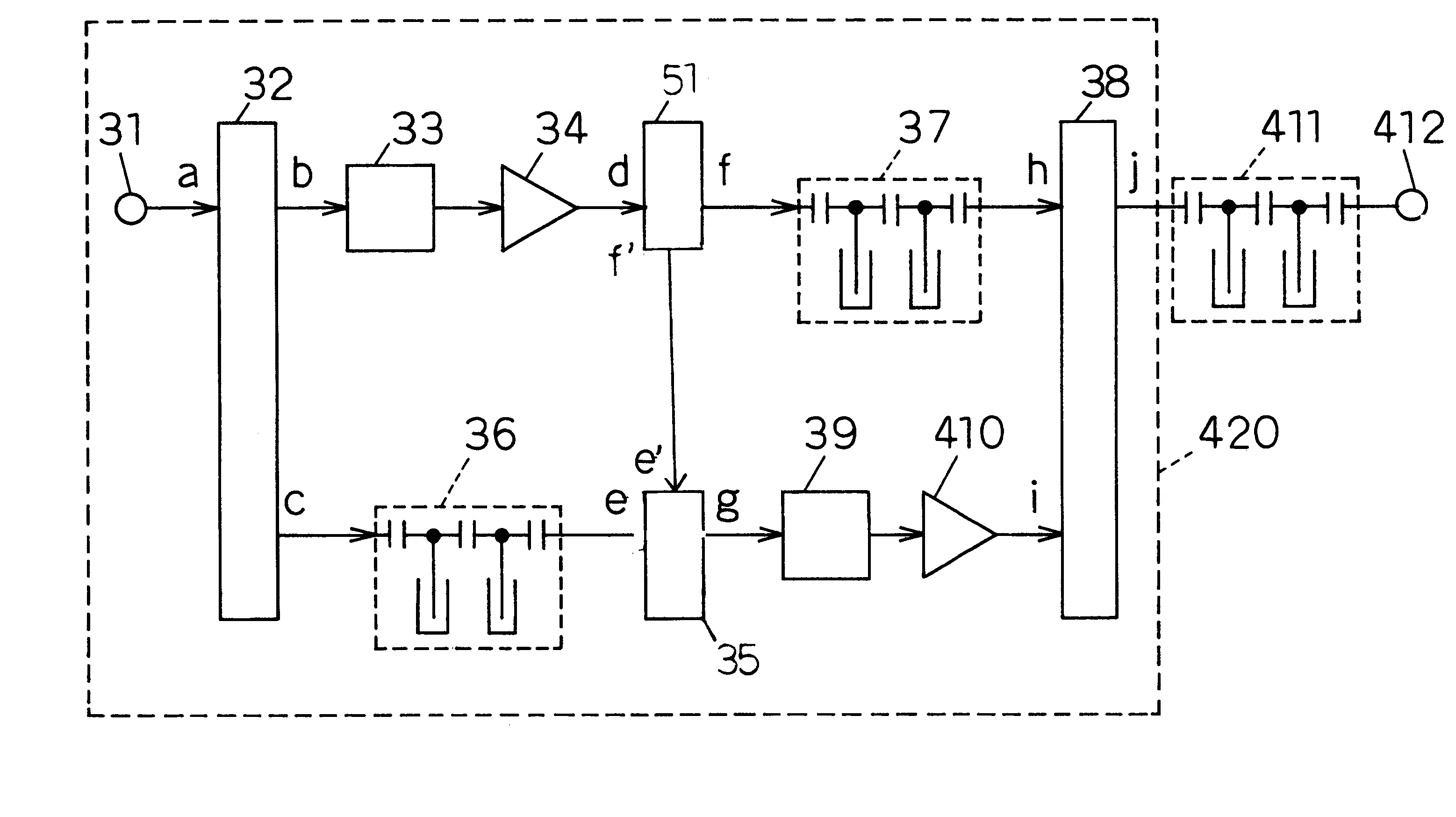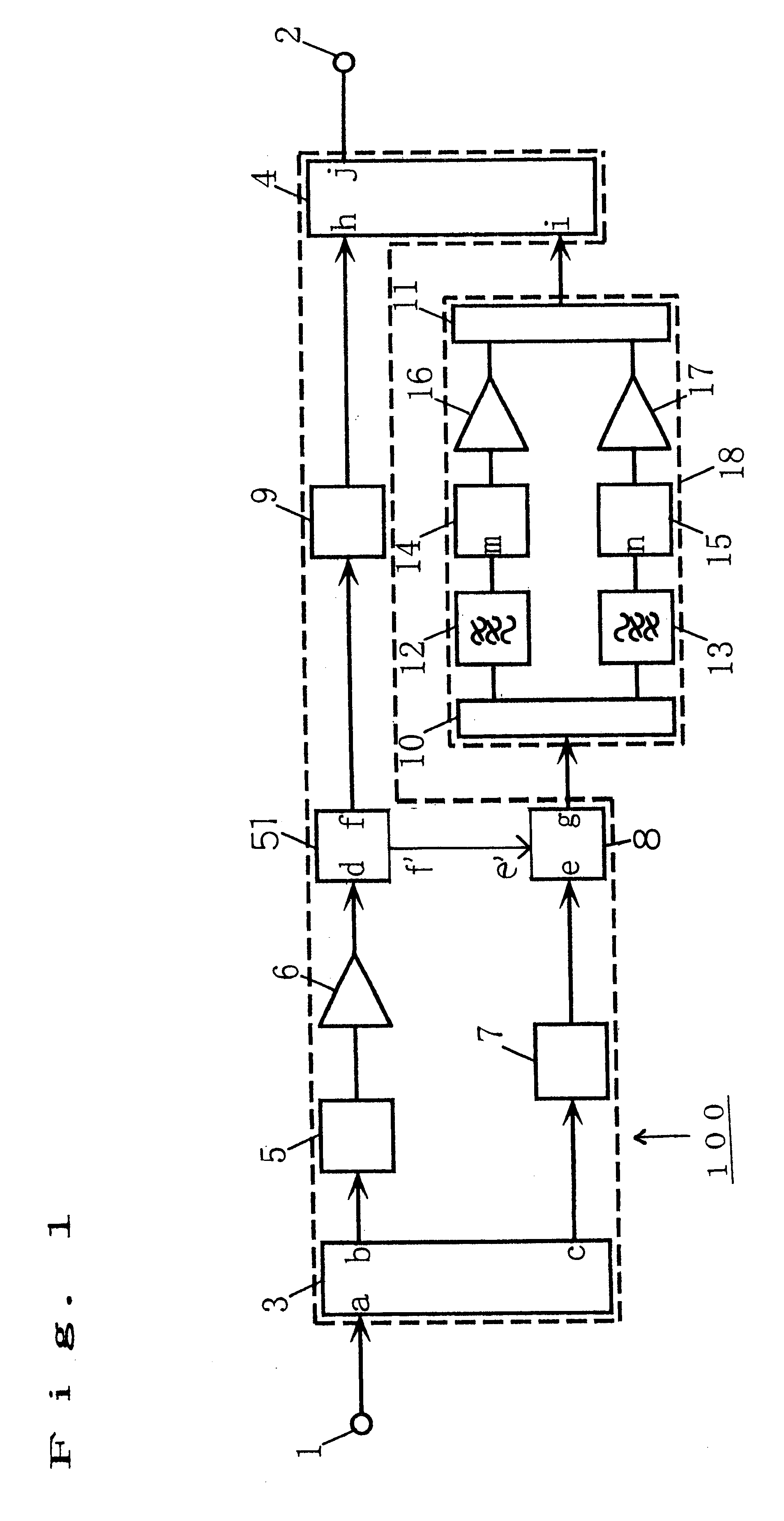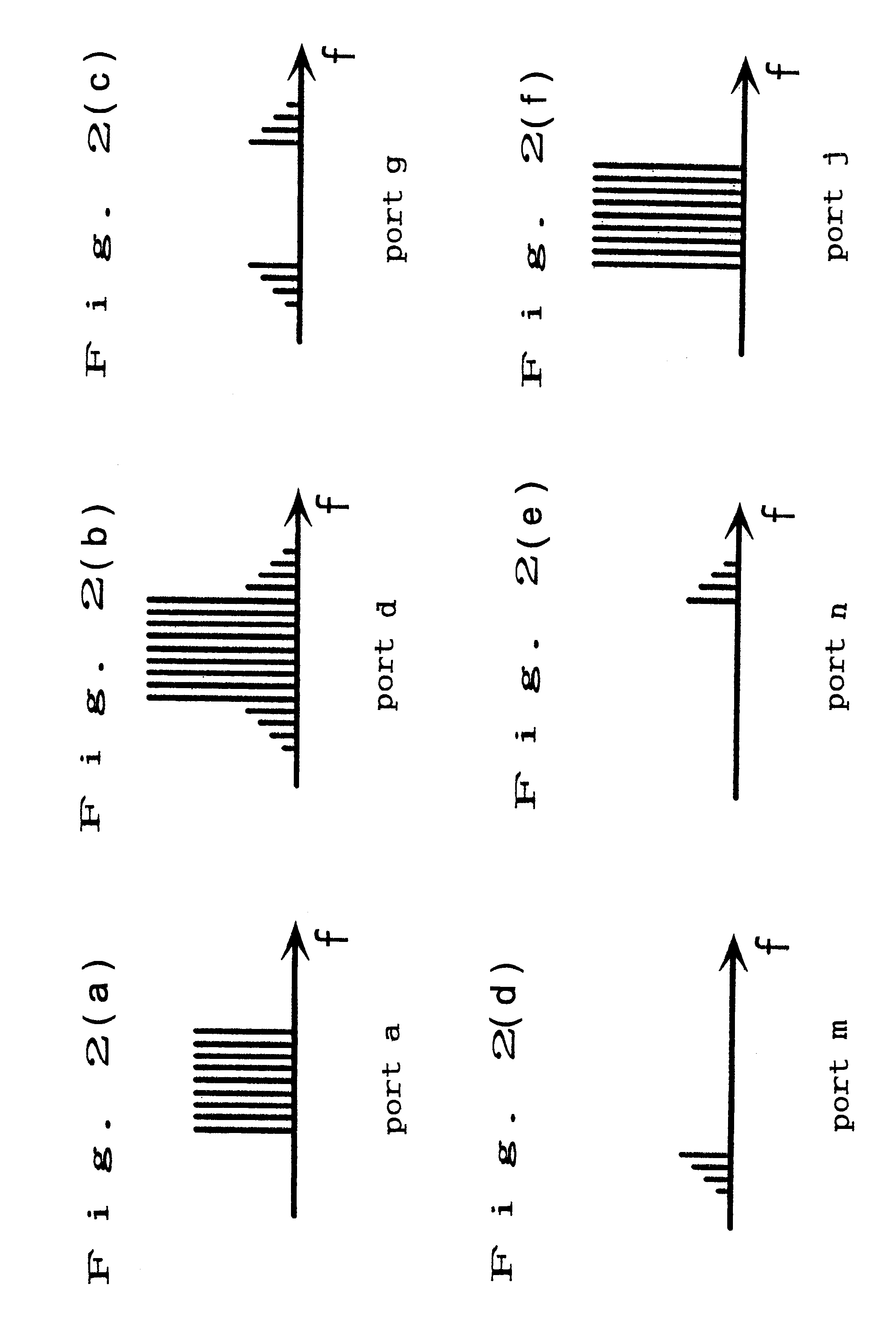Feedforward amplifier
a technology of amplifiers and amplifiers, applied in amplifiers, amplifier modifications to reduce noise influence, electrical devices, etc., can solve the problems of reducing the distortion of main amplifiers, reducing the power consumption of main amplifiers 6, and less production in band edges
- Summary
- Abstract
- Description
- Claims
- Application Information
AI Technical Summary
Problems solved by technology
Method used
Image
Examples
Embodiment Construction
Hereinafter, the invention will be described with reference to the accompanying drawings showing its embodiments.
FIG. 1 is a diagram of a feedforward amplifier which is an embodiment according to the first and second aspects of the invention. As shown in the figure, in a feedforward amplifier 100, an input terminal 1 allows an external signal to be input to the feedforward amplifier 100. An output terminal 2 allows a signal to be output from the feedforward amplifier 100 to the external. A power divider 3 divides the input from the input terminal 1 into two signals, and supplies the signals to a vector adjuster 5 and a delay circuit 7, respectively. A main amplifier 6 amplifies an input from the vector adjuster 5. A directional coupler 51 is such means for receiving signal from the main amplifier 6 and ouputting almost signals to delay circuit 7 from the main port and outputting a few signals to the after-mentioned power combiner 8. A power combiner 8 receives inputs from the couple...
PUM
 Login to View More
Login to View More Abstract
Description
Claims
Application Information
 Login to View More
Login to View More - R&D
- Intellectual Property
- Life Sciences
- Materials
- Tech Scout
- Unparalleled Data Quality
- Higher Quality Content
- 60% Fewer Hallucinations
Browse by: Latest US Patents, China's latest patents, Technical Efficacy Thesaurus, Application Domain, Technology Topic, Popular Technical Reports.
© 2025 PatSnap. All rights reserved.Legal|Privacy policy|Modern Slavery Act Transparency Statement|Sitemap|About US| Contact US: help@patsnap.com



